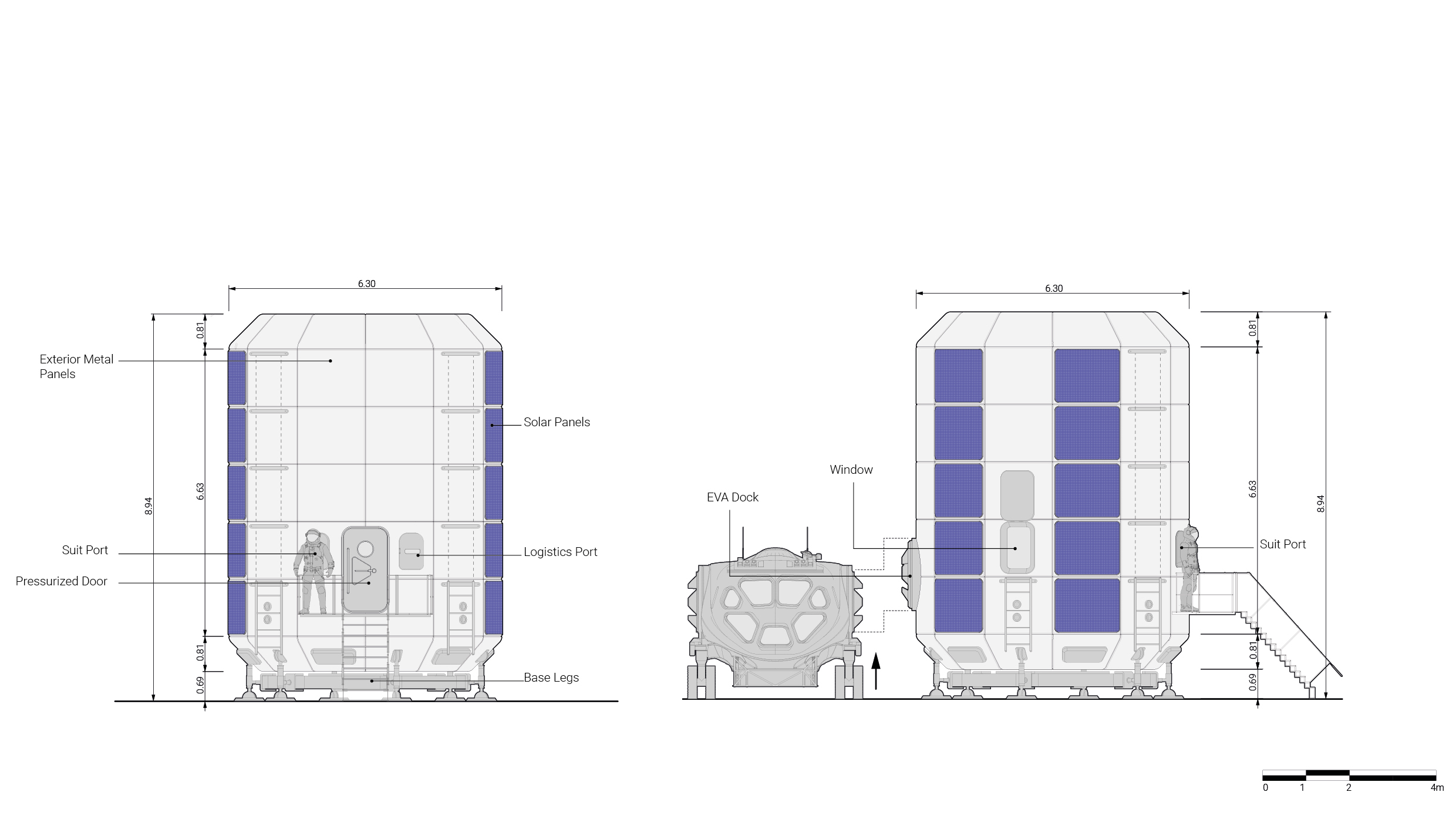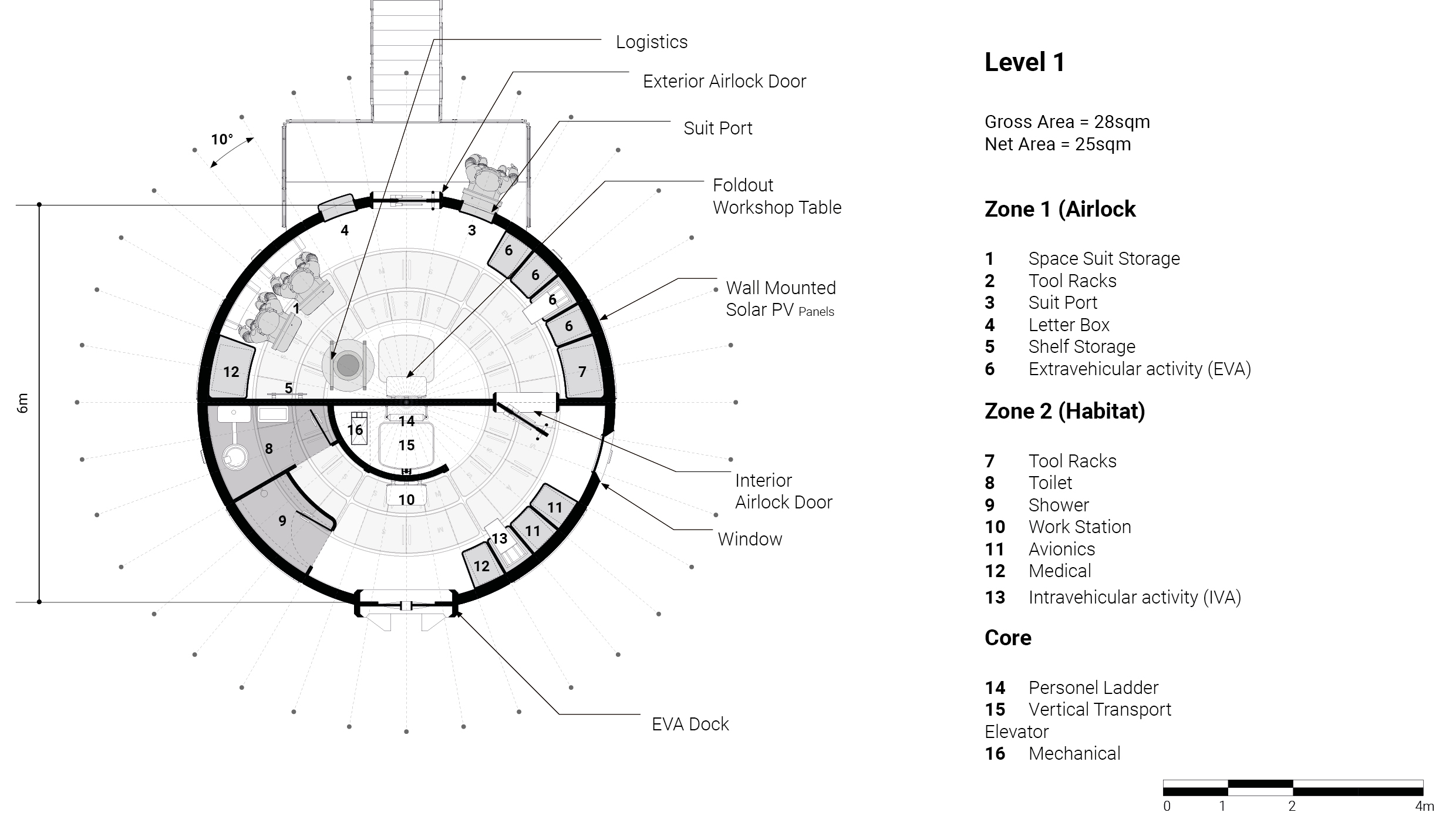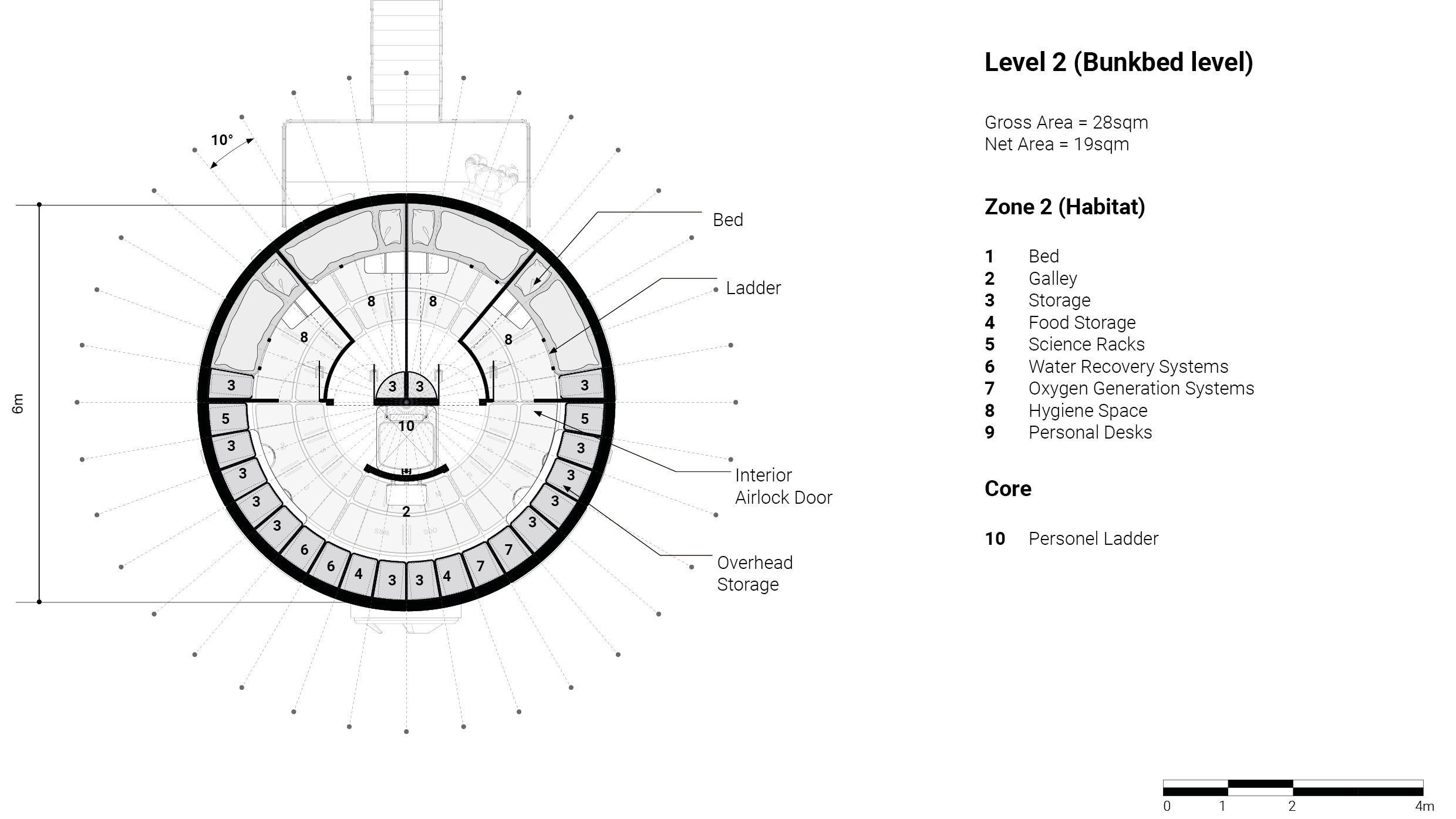
Simulation Habitat
Cologne, Germany
Typology: Space Architecture
Size: 84 sqm
Status: Concept
Overview: The solid pressure vessel is a cylindrical lunar habitat simulator with two floors, designed to support and test long-term living conditions for astronauts on Earth. It has a diameter of 6 meters and a height of 8.94 meters, featuring exterior metal panels, solar panels, suit ports, pressurized doors, logistics ports, and EVA docks. These elements ensure structural integrity, energy generation, and secure entry and exit points.
Interior Layout
Level 1 (Ground Level)
The first level includes an airlock zone and a habitat zone. The airlock zone contains space suit storage, tool racks, suit ports, a letter box, shelf storage, and a staging area for extravehicular activities (EVA). The habitat zone is equipped with tool racks, a toilet, shower, work station, avionics, medical area, and space for intravehicular activities (IVA). A personnel ladder and a vertical transport elevator connect the levels, and mechanical systems are housed in the core.
Level 2 (Upper Level)
The second level is divided into a habitat zone and a core area. The habitat zone includes sleeping areas (beds), a galley, storage, food storage, science racks, water recovery systems, oxygen generation systems, hygiene space, personal desks, and work stations. Additional features in the habitat zone include bunk beds with desks, foldable desks, and areas for relaxation and exercise. The core area of this level features the personnel ladder for vertical movement between floors.
Training and Utilization
Astronauts use this habitat simulator for training to prepare for actual lunar missions. It allows them to familiarize themselves with the layout, test life-support systems, and practice daily routines in a controlled environment. The simulator provides a realistic setting to conduct scientific experiments, manage resources, and handle emergencies, ensuring that astronauts are well-prepared for the challenges of living and working on the Moon.






